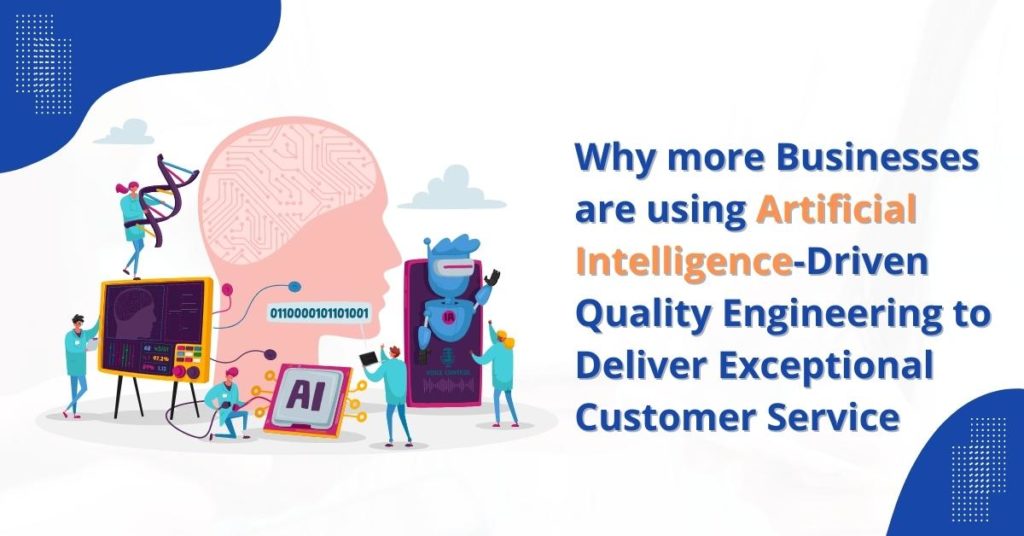

Why more businesses are using artificial intelligence-driven quality engineering to deliver exceptional customer service
In order to improve the customer experience (CX) and the digital experience, organisations must rely on quality assurance and software testing solutions that enable agile development and add value to the business lines.
In addition, regardless of the customer’s digital touchpoints, executives providing these digital and next-generation solutions must ensure the same by utilising AI-driven quality engineering. In this Agile and DevOps-based approach, the QA process is automated to generate outcomes like testing, continuous integration (CI), and delivery. In conclusion, engineering services for digital quality may lead to improved CX.
Testing of Next-Generation Applications and the Client Experience
Why is testing necessary for the newest generation of apps? Do you think conventional testing is adequate to meet rising customer demands?
Next-generation application testing is a part of testing the connected world with IoT devices, smart wearables, virtual reality, real-time relationships, as well as assessing the related digital ecosystems. Testing can help us achieve scalability, flexibility, and measurable results for our activities in the digital future.
But employing traditional ways of disseminating updates won’t keep you adaptable as next-generation technologies get more complex.
Taking a more comprehensive approach today, C-Suite executives are starting to include quality engineering into every phase of the development cycle so that it is ingrained in every line of business to handle a variety of difficulties, such as:
- Although the quick time to market is essential, traditional test automation methods slow down the process.
- The story doesn’t end when the service or product goes live; even a small inaccuracy can cost organisations customers right away.
- Thorough testing with a huge amount of data requires a lot of time and work.
- Customer experience needs to be enhanced because customer expectations are constantly shifting.
Quality Engineering for a Positive Customer Experience
A holistic digital quality engineering process should address a variety of issues, including the execution and verification of customer experience testing for a seamless experience. These include using CI and CD methodologies to automate the value chain. To improve the customer experience, QE services should consider the following types of testing:
Performance:
Tests are performed in this quality engineering approach to determine whether an application’s functionalities and features perform optimally when subjected to uncertainty.
Compatibility:
Compatibility testing aids in the development of stable solutions for next-generation applications that use a diverse set of software and hardware configurations. It ensures that any application runs smoothly across digital mediums such as desktops, laptops, smartphones, and tablets.
Usability:
Usability testing looks into task times, human-computer interactions, and error rates.
Accessibility:
To stay ahead of their competitors and capture a larger market share, businesses must be inclusive in their application offerings to various users.
Security:
Before digital and next-generation applications are delivered to end users, enterprise quality engineering can detect and correct flaws or glitches. It also ensures that no bugs remain after the launch because it aids in designing an application with little room for error, saving time, effort, and money in rework.
Conclusion
In today’s competitive business environment, quality engineering can help businesses reduce operational costs, eliminate errors, and provide superior customer experiences quickly and consistently. As time passes, test automation and bots become more capable of detecting potential errors. The product adapts to market changes and becomes more competitive by making advances based on input.
Companies go through digital transformation as part of an ongoing effort to meet customer expectations while lowering costs. Changes to your business model could benefit the overall business model.






